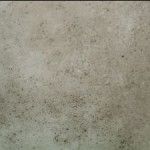 Mould is a common problem in Britain mainly due to weather conditions, the number of rented properties that are not being looked after properly and simply lack of awareness on how to deal with it.
Mould is a common problem in Britain mainly due to weather conditions, the number of rented properties that are not being looked after properly and simply lack of awareness on how to deal with it.
It is caused by humidity, poor heating or ventilation and water leaks. Mould cannot exist and grow without moisture. Therefore you must first find and eradicate the source. Be careful though as mould spores have been related to various health problems including infections, asthma, allergies and sinusitis. It may be worth considering getting a professional company to do the cleaning especially if you have existing health problems. If you do decide to take this on single handedly then make sure you use all the precautions: rubber gloves, eye goggles, overalls and dust mask. Avoid eating, drinking or smoking in the contaminated area as well.
Most of the cases of mould will appear or become worse after major leaks, floods or other water damages in house. It is very important to clean up and dry-out the property immediately if you want to prevent this. Open windows, use ventilators or dehumidifiers. Avoid using fans if mould damage is visible as this can spread the bacteria more easily. Pay extra attention to ventilation after cleaning as although current equipment will dry your carpet up to 90% you still must have air circulation in the house afterwards to dry it out properly to avoid condensation.
Propionic acid is the most effecting mold remover as well as Borax and borates although these will not remove the staining from mould. Use phosphoric acid for that instead of bleach. Vinegar is a good green alternative too.
Borax and borates can be effective but will not remove the staining from molds – phosphoric acid can do this in preference to bleach. In some cases staining can only be covered by painting, but it is very important to dry area out first.
Make sure you also clean things that were affected, not only surfaces. If anything has been affected by mould, it is best to get it removed where possible. If this is not possible, dry them out (make sure you move things away from walls first), clean and disinfect. For badly affected items begin by using a high suction industrial vacuum cleaner then damp-wipe. Dispose of your wipes and rinse water frequently – as they will be contaminated with mould quickly. Scrub all contaminated surfaces thoroughly with stiff brush, hot water, and a non-ammonia soap/detergent or commercial cleaner. Collect excess cleaner and cleaning water using a vacuum cleaner, a mop or sponge. Finally, rinse the surface or items with clean water and dry everything out as quickly as possible.
It is unlikely that any home will be completely free of condensation, but adjusting your lifestyle and knowing how to fight mould off will make enormous changes. Clean more often, ventilate and make sure you dry any major spillages and leaks quickly and efficiently.
